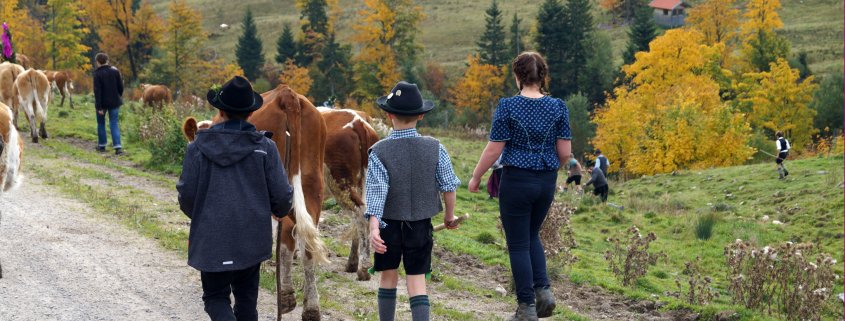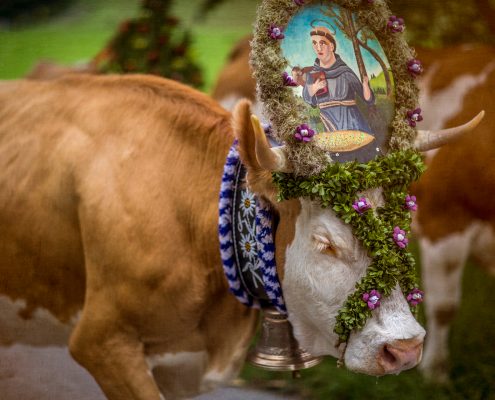Vorsicht, freilaufende Rinder: Almabtrieb im Spitzingseegebiet
Es ist wieder so weit: Freilaufende, oft festlich geschmückte Rinder bevölkern die Bergwege und Straßen im Bayerischen Oberland.
Mit dem Almabtrieb wird zwischen Mitte September und Mitte Oktober das Ende des Sommers gefeiert. Diesen verbrachte das Jungvieh auf den saftigen Almwiesen. Sobald das Gras nicht mehr ausreichend nachwächst, oder es zu kalt wird, werden die Rinder von den Bergweiden ins Tal überführt, damit sie in den warmen Stallungen der Bauernhöfe überwintern können.
Wenn während des Aufenthalts auf der Alm kein Tier zu Schaden gekommen ist und es keinen Trauerfall in der Familie des Bergbauern gegeben hat, werden die Tiere für den Almabtrieb aufwendig mit Buschen, Bändern und Glocken geschmückt. Diese werden traditionell von der Almerin oder dem Hirten während der Sommermonate aus Almrausch, Latschenkiefer, Silberdistel und Seidenblumen gefertigt. Am Tag des Almabtriebs helfen die Hirten und Treiber gemeinsam dabei mit, die Tiere mit den Gebinden zu schmücken. Und dann machen sich Mensch und Tier zusammen auf den Weg ins Tal, was oft mit einer hohen Geschwindigkeit der Rinder einhergeht, die sich bereits auf ihre Heimatstallungen zu freuen scheinen. Unten angekommen, werden die Tiere dann geschieden (Viehscheid) und ihren jeweiligen Eigentümern zugeführt.
Danach feiern alle Beteiligten den erfolgreichen Almabtrieb mit einem herzhaften bayerischen Braten und anderen regionalen Gerichten.
Also Vorsicht, liebe Autofahrer, an den Tagen des Almabtriebs ist Geduld angesagt. Im Zweifel sind die Rinder stärker als das Autoblech. Erfreut Euch an dem seltenen Anblick und gönnt Euch einen Moment des Innehaltens. Es ist ein Augenschmaus und ein besonderes Erlebnis, den Tieren auf ihrem Weg nach Hause zu begegnen.
Geborene Münchnerin und seit vielen Jahren begeisterte „Wahl-Schlierseerin“ Personaldiagnostikerin, Trainerin, Seminarleiterin, Hypno- und Gesprächstherapeutin, Hofbetreuerin im altbayerischen Dorf und vor allem Hobby-Fotografin.






























Du muss angemeldet sein, um einen Kommentar zu veröffentlichen.